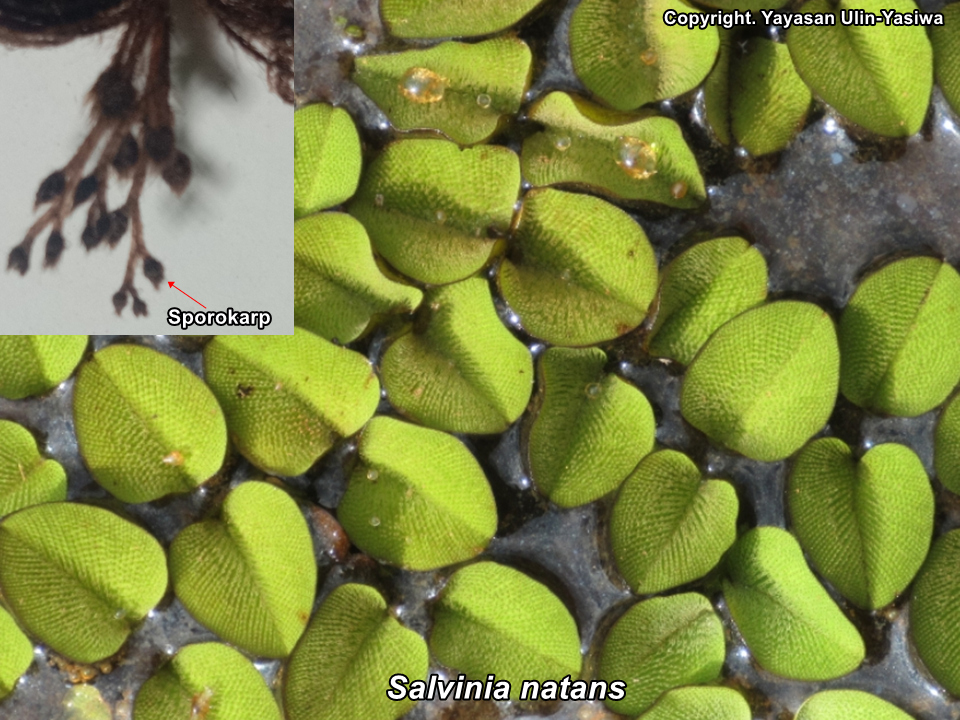Salvinia natans
(L.) All.
Salviniaceae
Nama : Paku air.
Deskripsi : Akuatik. Rimpang panjang bercabang-cabang, berakar serabut banyak, rimpang mengambang dipermukaan air. Helaian daun tunggal; tidak bertangkai atau bertangkai pendek, ca. 1 mm; tersusun berhadapan; membundar telur; pangkal membundar atau menjantung; ujung helaian menumpul; tepi helaian mengutuh; warna helaian hijau ke kuningan atau kecoklatan saat tua, permukaan helaian daun bersisik kasar dan berpori. Sporokarpa 4–8, berkumpul di pangkal daun yang terendam air, dengan sedikit bulu; mikrosporokarp berwarna kekuningan, megasporokarp berwarna kecoklatan.
Ekologi : Persebaran alami dari daerah beriklim sedang di Eurasia sampai Indo-China dan kawasan malesia. Pada umumnya tumbuh pada habitat rawa dan danau atau tepi sungai yang tidak berarus deras. Referensi: Lin et al., 2013.
Kegunaan : –

